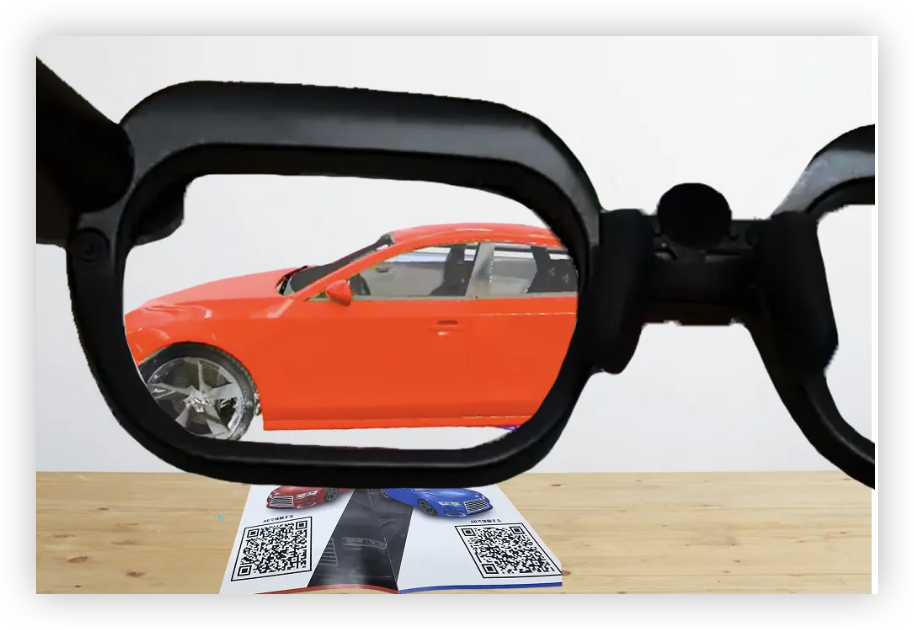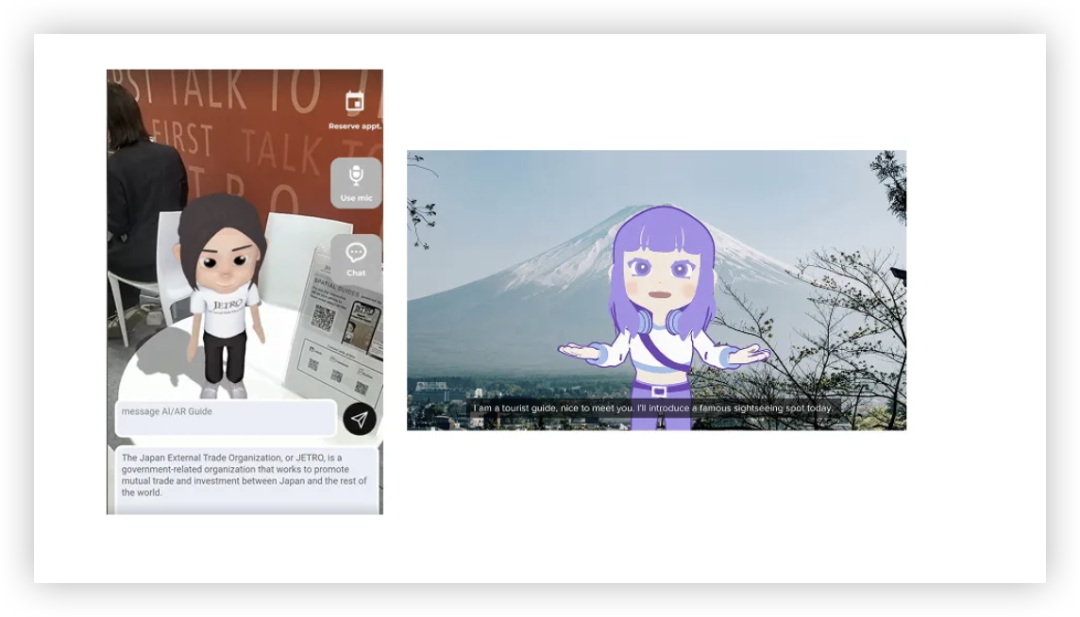AR Catalog: 3D Product Models Jump Off the Page with a Scan!

In the fast-changing world of business, traditional product catalogs are losing their edge. Bulky paper manuals are inconvenient to carry and fail to vividly showcase every product detail, making it hard for customers to form a real, emotional connection. However, as AR (Augmented Reality) technology matures, Japanese company Palan's "Tryable AR Catalog" is quietly emerging. It's not just an upgrade to traditional catalogs—it's a revolution in product display and sales experience.
Introduction
Imagine you're a salesperson meeting a potential client. Instead of heavy samples, you have a lightweight pair of AR glasses and a simple catalog with QR codes.
The moment your client looks at a QR code, a car that once only existed in a brochure, a complex medical device, or even a complete model of a futuristic home springs to life in the real world—right before their eyes. Size, details, even internal structures are clearly visible. This is the stunning experience brought by the "Tryable AR Catalog." It's turning science fiction into reality, elevating product display from 2D to 3D, and breaking the limits of the physical world.
We firmly believe the "AR Catalog" is not a fleeting "black technology," but the inevitable trend for future digital marketing and sales. It helps companies break free from the shackles of traditional displays, and with immersive, highly interactive experiences, deeply influences customer decisions, boosts conversion rates, and significantly reduces operational costs—ushering in a new era of business efficiency.
Core Features: From QR Code to Immersive Experience
The magic of the "Tryable AR Catalog" lies in its extreme convenience and powerful expressiveness. Users simply wear AR glasses (or use a smartphone/tablet), focus on a QR code in the catalog, and a high-precision 3D product model instantly appears in their real environment. This "what you see is what you get" feedback completely overturns previous imagination, letting customers examine products from every angle—even virtually "placing" them in their own space to preview real-life integration. Even more impressive, switching between product models is as easy as scanning a different QR code—far smoother than traditional demos.
Disruptive Product Display: Breaking the Boundaries of Imagination
The most significant advantage of the "Tryable AR Catalog" is breaking the physical limits of traditional displays. For large, complex, or high-value products—like heavy machinery, advanced medical equipment, or even entire vehicles—the AR catalog brings them "face-to-face" with customers. No more traveling to showrooms or hauling heavy samples. This immersive, interactive experience not only sparks customer interest and deepens understanding, but also greatly improves negotiation efficiency and success rates.
Smart Marketing & Cost Optimization: Efficiency Meets Innovation
Beyond visual impact, the AR catalog shows huge potential in smart marketing and cost control.
Imagine if your AR catalog included an AI virtual assistant. It could provide multilingual product explanations, interact in real time based on customer questions, and deliver standardized, professional information—greatly reducing sales staff pressure and cutting training and labor costs.

Even more noteworthy, with zero-code WebAR platforms like palanAR, companies can convert 3D models into AR content in just minutes. This means businesses can quickly update product info and swap 3D models themselves, without relying on external developers—dramatically shortening development cycles and saving valuable time and money. The platform also easily tracks user browsing data, providing valuable insights for optimizing marketing strategies.
Multi-Scenario Applications & Compatibility: Building a Boundless Business Ecosystem
The "Tryable AR Catalog" isn't just for sales meetings.
In the automotive industry, customers can freely switch car models and colors, or even simulate driving experiences via the AR catalog. In healthcare, complex equipment's internal structures and workflows can be visualized for teaching. In tourism and culture, AR guides can vividly present museum exhibits or scenic spot histories, and even create virtual showrooms for immersive shopping from home.
The solution supports professional AR glasses (like NTT KOKUYU's MiRZA®, Meta Quest, etc.) and is also designed for mass users, running as WebAR on smartphones and tablets. This means customers can experience products anytime, anywhere with an internet connection—vastly expanding reach and truly enabling borderless business expansion.
Conclusion
The "Tryable AR Catalog" is not just a technological innovation, but a brand-new business mindset. With lower costs, higher efficiency, and an ultimate experience, it empowers companies to stand out in fierce competition. For businesses eager to boost sales, optimize customer experience, and embrace a digital future, now is the best time to integrate the "Tryable AR Catalog" into your marketing system. The future is here—let's witness together how AR technology redefines the boundaries of business!
Reference: https://studio.palanar.com/
</rewritten_file>
分享文章
3篇相关文章
Farewell Adobe Aero: Where Does the AR Creation Path Lead? Deep Analysis of Service Shutdown Impact and Efficient Alternatives!
2025-08-14
Adobe Aero is about to shut down, causing shockwaves in the AR creation community. This article provides deep analysis of the shutdown impact and practical alternatives for users to help you transition smoothly and continue on your AR creation journey.
Cadillac's 'Vision' Opens Wide: How AR-HUD Technology Reshapes Future Driving Experience?
2025-08-13
General Motors' Cadillac brand is about to introduce revolutionary AR-HUD technology, which is not just a simple upgrade, but a disruptive beginning of future driving experience.
Goodbye Boring Navigation: Amap’s AR Check-In Ignites Urban Exploration
2025-07-10
Amap’s new AR check-in feature, powered by AI, transforms every city adventure into a unique experience. It’s not just a navigation tool, but a key to unlocking urban stories—empowering everyone to become the protagonist of their own life and record the world’s wonders with the warmth of technology.